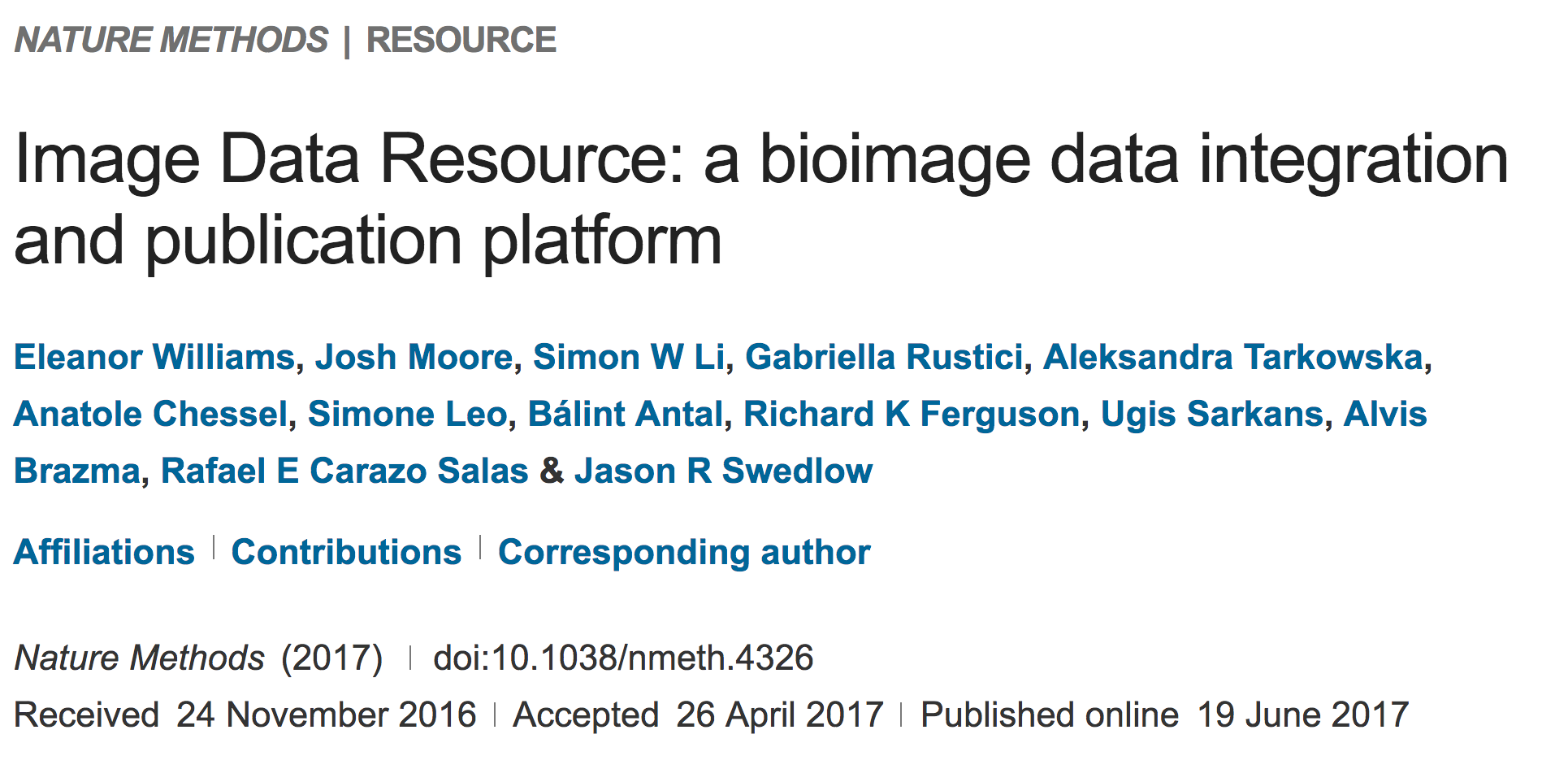
Image Data Resource
The Image Data Resource (IDR) is a public repository of reference image datasets from published scientific studies. IDR enables access, search and analysis of these highly annotated datasets.
Cell-IDR Tissue-IDR

The IDR makes datasets that have never previously been accessible publicly available, allowing the community to search, view, mine and even process and analyze large, complex, multidimensional life sciences image data. Sharing data promotes the validation of experimental methods and scientific conclusions, the comparison with new data obtained by the global scientific community, and enables data reuse by developers of new analysis and processing tools.
You can browse the IDR without any special knowledge, but if you would like to see how the IDR can be used to obtain new biological insights from existing datasets, or a more in-depth explanation of how the IDR is set up, please see the Nature Methods paper.

IDR datasets are annotated with author-supplied metadata (e.g., annotations, defined regions, feature vectors and ontological annotations) that are all stored and available for browsing. All metadata are also available through the OMERO API.
If you are interested in submitting data to the IDR, see our submission guidelines.
Datasets in human cells, Drosophila, and fungi are included. The full Mitocheck dataset and a comprehensive chemical screen in human cells are included. Imaging data from Tara Oceans, a global survey of plankton and other marine organisms is also included.
Wherever possible, functional annotations (e.g., “increased peripheral actin") and experimental components have been converted to defined terms in the EFO, CMPO or other ontologies, always in collaboration with the data submitters (see example). >80% of the functional annotations have links to defined, published controlled vocabularies.
IDR uses OME’s Bio-Formats and OMERO tools to read, manage and serve data, and provide links to EMBL-EBI’s molecular and structural resources. The resource is built upon EMBL-EBI’s OpenStack-based Embassy infrastructure. All tools used for reading and converting metadata associated with each dataset and all scripts used to build the infrastructure are maintained and available. A parallel system that enables computational re-analysis of IDR data will be released soon.
The IDR includes a virtual analysis environment that provides full access to all data.
Details on accessing the public IDR API are available under about/api.html.
The IDR Project PIs are Jason Swedlow (Dundee), Alvis Brazma (EMBL-EBI) and Rafael Carazo Salas. Construction of the IDR project was funded by the BBSRC (Ref: BB/M018423/1) as a collaboration between the OME Consortium at Dundee and EMBL-EBI. The IDR is part of several projects that have received funding from the European Union's Horizon 2020 research and innovation programme under grant agreements 688945 (Euro-BioImaging Prep Phase II), 653493 (Global BioImaging Project) and 654248 (CORBEL). For 2018-2022, dataset submission and publication is funded by the Wellcome Trust (Ref: 212962/Z/18/Z) and integration with EMBL-EBI's BioStudies and other resources is funded by the BBSRC (Ref: BB/R015384/1).
See the full list of published studies for more details.
Details of the infrastructure underlying the IDR, and instructions for deploying your IDR own version are on the IDR Deployment page.
© 2016-2025 University of Dundee & Open Microscopy Environment. Creative Commons Attribution 4.0 International License.
OMERO is distributed under the terms of the GNU GPL. For more information, visit openmicroscopy.org